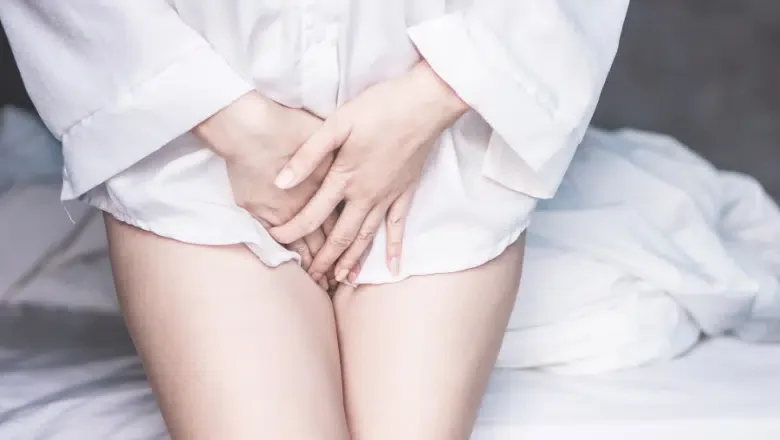The sound of air escaping from the vagina—commonly called a queef—is something that many people may experience but often feel too embarrassed to talk about. You might also hear it referred to as vaginal flatulence, vaginal gas, or even vaginal farts. No matter what name it goes by, it’s important to understand that queefing is usually a completely normal and harmless part of life. It can happen to people of all ages and is not necessarily a sign that anything is wrong.
Although queefing is usually nothing to worry about, it helps to have a basic understanding of what’s going on in your body. The vagina is a muscular, flexible structure, and as you move, air can sometimes get pulled in and pushed back out again. The result is the unmistakable sound that many find awkward or funny, but is in fact completely natural.
At Centre for Surgery in London, we offer expert assessment and care for a wide range of gynaecological and pelvic health concerns. If you’ve noticed a change in your body and are unsure whether it’s normal, speaking to one of our specialists can provide peace of mind and, if necessary, a personalised treatment plan.
What is a Queef?
A queef is the release of air from the vagina, often producing a sound that many people confuse with flatulence from the digestive system. Although the two might sound similar, they are very different in nature. The noise that comes with a queef is caused purely by air that has been trapped inside the vaginal canal and is then pushed out, usually during or after physical movement.
What makes queefing so commonly misunderstood is the assumption that it’s the same as passing gas. This often leads to feelings of embarrassment, especially if it happens in a quiet or intimate setting. But unlike digestive flatulence, queefs have no smell because the air hasn’t travelled through the intestines. It’s simply regular air that entered the vagina, often during sex, exercise, or even just through natural shifts in body position.
Although the sound may catch you off guard, there is nothing unhygienic or abnormal about it. The vagina is a muscular and flexible part of the body, and it’s completely natural for air to move in and out from time to time. Knowing this can help remove some of the discomfort or embarrassment people feel when it happens.
What Causes Queefing?
Queefing happens when air gets trapped in the vaginal canal and is then pushed out, often creating a noticeable sound. This can occur during a range of everyday activities and is usually nothing to worry about. Physical movement is the most common trigger. Whether you’re exercising, stretching, crossing your legs, or removing a tampon or menstrual cup, these simple actions can allow air to enter the vagina and then escape shortly after.
For most people, queefing now and then is completely normal and doesn’t indicate anything serious. It’s just a natural response to changes in pressure or position that cause air to move in and out of the vaginal space. Many find it unexpected or awkward, especially when it happens during intimate moments or in public, but it’s simply a physical reaction—not a sign of poor health.
In some cases, though, frequent or chronic queefing might point to something more. It could be related to weakened pelvic floor muscles, vaginal laxity after childbirth, or even anatomical changes following surgery. If you’ve noticed queefing happening more often than usual or alongside other symptoms such as a sensation of looseness or discomfort, it may be worth speaking to a medical professional at Centre for Surgery.
Weak Pelvic Floor
The strength and tone of your pelvic floor play a major role in controlling the movement of air in and out of the vaginal canal. When the pelvic floor muscles become weakened, it can make queefing more likely. The pelvic floor is a group of muscles and connective tissues that support key organs in the lower abdomen, including the bladder, bowel, and reproductive organs. When this support system loses its strength, it can affect how the vaginal canal behaves during movement, often making it easier for air to get trapped and then released.
There are several reasons why the pelvic floor can become weaker over time. Pregnancy and childbirth are two of the most common causes. During these stages, the pelvic floor is placed under considerable strain as it stretches to accommodate the baby and then recovers after delivery. It’s quite common for people to notice more frequent queefing in the months following childbirth.
Ageing also plays a role. As the body gets older, the tissues naturally lose some of their firmness and elasticity. During menopause, for instance, declining oestrogen levels can lead to reduced muscle tone in the pelvic region. This makes it harder for the vagina to maintain its usual structure and increases the chance of air entering and exiting with certain movements.
Hormonal Changes
Hormones play a vital role in maintaining the strength, tone, and overall health of the vaginal tissues. When these hormone levels fluctuate—whether during menopause, pregnancy, or even the menstrual cycle—they can affect the way the vaginal canal behaves. One of the lesser-known but very real side effects of these changes is increased queefing.
During menopause, oestrogen levels decline, which leads to a drop in blood flow and collagen production in the vaginal walls and surrounding tissues. As the tissues become thinner and less elastic, the muscles also lose some of their strength. This weakening can make it easier for air to enter and exit the vagina, which is why many women notice an increase in queefing during or after the menopause transition. It’s often just one of several changes that happen during this time—others include vaginal dryness and a higher risk of urinary incontinence.
Hormonal changes during pregnancy can have a similar effect. As hormone levels rise to support the pregnancy, the body naturally becomes more relaxed and pliable, especially in preparation for childbirth. This softening can make the vaginal muscles looser, allowing more air to become trapped and released.
Even the normal hormonal shifts that happen during ovulation or menstruation can affect the vaginal canal’s tone. Some people notice more queefing during these times simply because the muscles are slightly more relaxed.
Vaginal Prolapse
Vaginal prolapse occurs when the vaginal walls or the top of the vagina shift out of their usual position due to weakened pelvic support. This condition is most often seen in people who have had multiple vaginal births, but it can affect anyone whose pelvic muscles and connective tissues have been overstretched or weakened over time. Ageing, heavy lifting, previous pelvic surgeries like a hysterectomy, and chronic straining can all contribute to the development of prolapse.
When prolapse happens, the upper part of the vagina no longer holds its natural shape. As a result, the organs it once supported—such as the bladder, uterus, or rectum—may also move out of position. This often leads to a sense of pressure or fullness in the pelvic area. Some people also notice a visible bulge or lump, particularly when standing or straining.
Queefing tends to become more frequent in people with vaginal prolapse because the structure of the vagina has changed. The shift creates small pockets or gaps where air can easily collect. When you move, that air gets pushed out, leading to a queef. While the sound might seem like the most noticeable effect, it’s usually just one sign of a wider issue with pelvic support.
During Exercise or Sex
Frequent queefing is not always linked to health conditions or changes in anatomy. In many cases, it’s simply a natural response to movement—particularly during physical activity or sexual intercourse. If you’ve noticed queefing becoming more common while exercising or being intimate, there’s usually no cause for concern.
Exercise can easily cause air to be drawn into the vaginal canal. Movements that involve bending, stretching, or shifting position—such as in yoga, Pilates, running, or weight training—create changes in pressure within the pelvic area. These pressure changes make it easier for air to enter the vagina. When you move again, especially during quick or forceful transitions between positions, that trapped air can be released, often making an audible sound.
Similarly, queefing during sex is very common and completely normal. The movement of penetration can push air into the vagina, and when there’s a change in rhythm, depth, or position, the air may be forced out. Vaginal contractions, which naturally occur during arousal and orgasm, can also contribute to the release of air. This is a perfectly normal part of how the body works and doesn’t mean there’s a problem.
How to Treat Queefing – Non-Surgical and Surgical Options
Occasional queefing during sex or exercise is completely normal and usually doesn’t need any treatment. It’s simply a natural result of air getting trapped in the vaginal canal during movement. For most people, it’s nothing more than a brief and harmless noise. However, if queefing becomes frequent or starts to cause discomfort or embarrassment, there are ways to help reduce it.
A strong and healthy pelvic floor is the best foundation for keeping spontaneous queefing to a minimum. When the muscles in this area are firm and well-supported, the chances of air being trapped or escaping unexpectedly are reduced. If you’re concerned about queefing that happens often or seems to have started suddenly, it may be a sign that your pelvic floor needs a bit of attention—or that there’s an underlying issue like vaginal laxity or prolapse that may benefit from treatment.
Kegal Exercises
One of the most effective non-surgical ways to improve pelvic strength is through Kegel exercises. These are simple muscle contractions that help tone the pelvic floor over time. The movement involves squeezing and lifting the muscles you would normally use to stop the flow of urine. Holding each contraction for around five seconds and repeating in sets throughout the day can lead to noticeable improvement, especially when done consistently.
Vaginoplasty (Vaginal Tightening Surgery)
For those experiencing significant vaginal looseness or changes following childbirth, ageing, or pelvic surgery, more advanced options may be suitable. Vaginoplasty is a surgical procedure that tightens and restores the structure of the vaginal canal. It is often recommended for people with vaginal prolapse or weakened pelvic support and can reduce persistent queefing while also improving physical comfort and sexual satisfaction.
Laser Vaginal Rejuvenation
Another less invasive solution is laser vaginal rejuvenation. This treatment uses focused laser energy to stimulate collagen production and tighten the internal vaginal tissues. The process helps firm the area and restore elasticity, often without the need for anaesthesia or downtime. Laser treatments are done in-clinic and are a popular option for those looking for a non-surgical approach to vaginal toning and function.
Why Choose Centre for Surgery?
At Centre for Surgery, we combine advanced medical expertise with a personalised, patient-first approach to provide world-class care in a discreet and modern setting. Our specialist-led clinic in the heart of London on Baker Street is designed for comfort, privacy, and exceptional outcomes. Whether you are considering surgical or non-surgical treatments, we ensure every step of your journey is safe, informed, and supported by experienced professionals.
We are proud to be a fully CQC-registered day surgery centre, offering the highest standards of clinical safety. Our consultants are leaders in their fields, many of whom also hold NHS positions and have international training backgrounds. From your initial consultation to your aftercare, you will be treated with respect, dignity, and full transparency.
Patients choose us for our commitment to natural-looking results, expert medical guidance, and a welcoming atmosphere where your concerns are always taken seriously.
What Our Patients Say
“The staff made me feel completely at ease from the moment I arrived. My consultant took the time to explain everything in detail and made sure all my questions were answered. I couldn’t have asked for a better experience.”
– Amira S., London
“I felt listened to and genuinely cared for throughout my treatment. The whole team was fantastic, and the results were even better than I hoped for. Highly recommended.”
– Rebecca M., Kent
“After visiting several clinics, Centre for Surgery stood out for their professionalism and personalised approach. The consultation was honest, and the care I received before and after my procedure was exceptional.”
– Laura B., Surrey
Ready to Book Your Consultation?
Our friendly patient care team is available to answer any questions and help you schedule a consultation with one of our specialists.
📍 Centre for Surgery, 95–97 Baker Street, London W1U 6RN
📞 Call us on 0207 993 4849
📧 Email: contact@centreforsurgery.com
For more about our clinic and what makes us different, visit our Why Choose Us page.
Meet our leading team of specialists who bring extensive experience and dedication to your care.
We also offer a range of finance options to help make treatment more affordable and accessible.
To explore more about procedures, recovery, and real patient stories, browse our plastic surgery blog.
You can also read answers to commonly asked questions in our clinic FAQs.
Discover why patients across the UK trust Centre for Surgery for high-quality, safe, and compassionate care.










